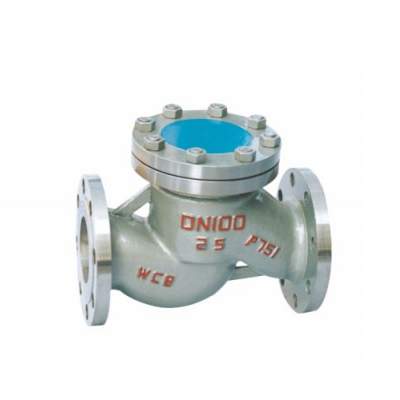Welcome to My Blog!
Before we dive into the content, I’d love for you to join me on my social media platforms where I share more insights, engage with the community, and post updates. Here’s how you can connect with me:
Facebook:https://www.facebook.com/profile.php?id=61563865935136
Now, let’s get started on our journey together. I hope you find the content here insightful, engaging, and valuable.
Introduction

When it comes to controlling the flow direction of liquids or gases in industrial systems, stainless steel check valves are a highly dependable solution. These valves allow media to flow in one direction only, preventing backflow and potential damage to equipment. The use of stainless steel as a base material further enhances their reliability, durability, and resistance to corrosion.
In this blog, we’ll explore why stainless steel check valves are a smart choice for a variety of industries, examining their features, advantages, applications, and specifications. Whether you’re a seasoned engineer or a procurement specialist, this guide will offer in-depth insights into why stainless steel check valves continue to be a top pick across the globe.
What Makes Stainless Steel Check Valves Unique?
Stainless steel check valves stand apart from their counterparts due to their material composition and engineered functionality. The core difference lies in the use of stainless steel, which offers high strength, temperature resistance, and corrosion protection, especially in harsh environments like chemical processing, water treatment, and marine operations.
Unlike plastic or brass valves, stainless steel versions can handle high-pressure applications and are suitable for both aggressive chemicals and high-purity media. Their unique combination of mechanical and chemical resilience makes them a preferred option in critical systems.
Key Features of Stainless Steel Check Valves
Corrosion Resistance in Harsh Environments
One of the leading advantages of stainless steel check valves is their exceptional resistance to corrosion. In industries where the fluid may be saline, acidic, or otherwise aggressive, these valves maintain their integrity over extended periods.
High-Pressure and Temperature Tolerance
These valves can perform under high-pressure conditions and elevated temperatures without deformation or failure. This is especially vital in steam systems, oil pipelines, and chemical processing plants.
Low Maintenance Requirements
Thanks to the strength and durability of stainless steel, these valves require minimal maintenance, reducing downtime and long-term operating costs.
Hygienic Properties for Food and Pharma
Stainless steel check valves are widely used in food, beverage, and pharmaceutical applications due to their non-reactive surfaces and ease of cleaning. They help maintain sanitary conditions by preventing contamination.
Common Applications of Stainless Steel Check Valves
Stainless steel check valves are used across many industries due to their reliability and performance. Below are some of the most common applications:
- Water Treatment Plants: To prevent reverse flow in filtration and purification systems.
- Chemical Manufacturing: Suitable for acids, solvents, and other reactive fluids.
- Oil & Gas Pipelines: To maintain unidirectional flow and protect pumps.
- Pharmaceutical Production: Ensuring sterile conditions and avoiding cross-contamination.
- Marine Systems: Ideal for saltwater environments due to their corrosion resistance.
Types of Stainless Steel Check Valves and Their Use Cases
| Type of Valve | Flow Direction | Ideal Use Case | Pressure Rating (PSI) | Material Grade |
|---|---|---|---|---|
| Swing Check Valve | Horizontal | Water pipelines, general service | 200–600 | SS304, SS316 |
| Lift Check Valve | Vertical | High-pressure steam, gases | 600–1500 | SS316L |
| Ball Check Valve | Multi-Directional | Chemical lines, viscous fluids | 150–500 | SS316 |
| Dual Plate Check Valve | Horizontal | HVAC, cooling systems | 200–800 | SS304, SS316 |
| Spring-Loaded Check Valve | Vertical | Compressed air, pump systems | 1000+ | SS316L |
This table provides a general overview of stainless steel check valve types, their ideal flow orientation, applications, and material composition. When selecting the right type, it’s important to consider operating conditions and media compatibility.
Benefits of Choosing Stainless Steel Over Other Materials
Superior Lifespan
Stainless steel check valves last significantly longer than their brass or PVC counterparts, especially in challenging conditions involving corrosive or high-temperature media.
Enhanced Safety
By minimizing failure risks through strong, corrosion-resistant designs, these valves contribute to overall system safety. Leaks and reverse flows are less likely with precision-engineered stainless steel check valves.
Lower Total Cost of Ownership
While the upfront cost of stainless steel may be higher, the long-term savings from reduced maintenance, fewer replacements, and minimized downtime justify the investment.
Versatility Across Systems
These valves are adaptable to nearly all piping systems, including those used in food-grade and chemical environments, due to their compatibility with both metallic and non-metallic pipework.
Considerations Before Purchasing Stainless Steel Check Valves
Before selecting a stainless steel check valve, keep the following factors in mind:
- System Pressure and Temperature: Ensure compatibility with expected operating ranges.
- Valve Size and Type: Match the valve size to your pipeline to avoid flow restrictions or leaks.
- Installation Orientation: Some valves are designed specifically for vertical or horizontal flow.
- Media Compatibility: Confirm the valve material is suitable for the media in use.
- Regulatory Standards: Make sure the product complies with relevant ISO, ASTM, or API standards, especially for sensitive applications.
Taking these aspects into account ensures optimal valve performance and long-term reliability.
Stainless Steel Check Valves in Sustainability and Green Systems

As industries move toward sustainable operations, stainless steel check valves offer several environmental advantages:
- Recyclability: Stainless steel is 100% recyclable, reducing environmental impact.
- Leak Prevention: Reducing leaks means minimizing waste and environmental hazards.
- Durability: Long product life minimizes the frequency of replacements, reducing material consumption.
These properties align with green building and process initiatives, making them a smart component of sustainable infrastructure.
Comparing Stainless Steel Check Valves With Other Materials
| Feature | Stainless Steel | Brass | PVC |
|---|---|---|---|
| Corrosion Resistance | Excellent | Moderate | Poor with some chemicals |
| Temperature Tolerance | High | Moderate | Low |
| Lifespan | 15–25 years | 5–10 years | 3–7 years |
| Maintenance Frequency | Low | Moderate | High |
| Environmental Compatibility | High | Medium | Low |
Stainless steel clearly outperforms other common materials in key performance metrics, further cementing its status as a superior option for demanding systems.
Conclusion
From exceptional durability to unmatched corrosion resistance, stainless steel check valves offer a smart, long-term investment for any fluid system. Whether you’re managing a high-pressure industrial setup or ensuring sanitary conditions in food production, these valves deliver on performance, reliability, and safety.
If you’re ready to upgrade your systems with dependable components, stainless steel check valves are the way to go. For inquiries or to request a quote, contact us today. Our team is ready to assist you in selecting the ideal solution for your application.
FAQ
What industries benefit most from stainless steel check valves?
Industries such as water treatment, oil and gas, chemical manufacturing, food and beverage, and pharmaceuticals benefit significantly due to the valves’ durability and chemical resistance.
Are stainless steel check valves suitable for potable water systems?
Yes. Stainless steel check valves, especially those made from SS304 or SS316, are suitable for potable water and other hygiene-sensitive applications.
How do I determine the correct valve size?
The valve size should match the diameter of your pipeline. Additionally, consider the flow rate and pressure to ensure efficient operation.
